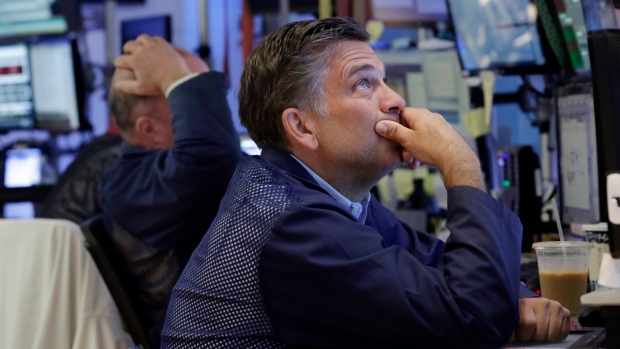Jul 11, 2016
Larry Berman: Why the S&P 500 will take our attention off geopolitical uncertainty
By Larry Berman

ANALYSIS: The focus for the next month will likely turn back to the fundamentals of earnings and away from the geopolitics that have dominated headlines.
Italian banks are still on the brink, but there appears to be more of a bail-out (this is where governments stuff taxpayer money to recapitalize them like the U.S. did with the troubled asset relief program, or TARP) versus a bail-in (this is where the banks take money out of your bank account to recapitalize, which is where the EU laws are set up after Cyprus) solution developing.
To be sure, for the markets, bail-outs are better than bail-ins, but neither is good and this underscores the push to generate growth at any cost. There are, of course, the U.S. political conventions to consider as well, but most will be focused on what CEOs are telling us about their businesses—tailwinds and headwinds.
We think it is far more important to focus on top line growth than bottom line. The bottom line has been financially engineered for years and it is really hard to trust. Some estimates that “adjusted” earnings are inflating the bottom line by 10 per cent or more. If we consider all the share buybacks in recent years, earnings per share are even more inflated by as much as 25 per cent. The number that you really can not “adjust” to suit is revenue unless you are an outright fraud and of course that happens from time to time.
Revenue for the S&P 500 is expected to fall about 0.8 per cent according to bottom up analyst forecasts:
Revenue Expectations
| SECTOR | Q2 2016 | FISCAL YEAR 2017 |
|---|---|---|
| S&P 500 | -0.8% | 9.0% |
| Discretionary | 5.1% | 4.9% |
| Staples | 1.2% | 3.8% |
| Energy | -28% | 23.9% |
| Financial | 1.4% | 4.7% |
| Health Care | 8.2% | 7.4% |
| Industrials | -2.3% | 2.9% |
| Technology | -1.0% | 6.0% |
| Materials | -6.7% | 4.4% |
| Telecom | 10.8% | 5.8% |
| Utilities | 2.2% | 3.0% |
If we exclude energy, revenue growth is about 2.3 per cent, which is about 1.5 per cent inflation and very little real growth.
Even as we look into 2017, top line revenues are expected to bounce back in energy. In other sectors analysts are expecting the dollar to weaken, which does tend to add to revenue growth. But keep in mind, analysts are always overestimating the market potential, so these numbers will change significantly based on what management says.
A look at top line financial ratio like price to sales (that’s the amount you are paying per dollar of revenue) is currently at 1.9 per cent. Historically, the market suggests negative returns over the next few years when the valuation is so high.
There is a good reason the S&P 500 has stalled out over the past few years at these levels. Recall that in the late 1990s, the growth catalyst was the internet. Today, there are far more growth headwinds than tailwinds.
On the bottom line, analysts are always out to lunch on their forward estimates for earnings per share. A look back at the last 10 years shows a significant gap between estimate earning and actual earnings. The message here is to significantly discount what analysts are suggesting about the future.
So our question of the week to BNN viewers is this: With all the global uncertainty, how confident about the next year will CEOs be?
My sense is that late in the market cycle, CEOs will tend to be more cautious with many of the potential headwinds. So there is room for the S&P 500 to make marginal new highs, but chasing the breakout with high valuations is not a high probability strategy.
To those who say that stocks yield more than bonds and therefore like the Iron Lady used to say, “there is no alternative,” don’t look at the risks of owning more volatile stocks at poor valuations than being a bit conservative for a while.
I’ll be using the cognitive side of my brain and reducing portfolio risk for my clients into strength rather than using the emotional side of my brain and celebrating the euphoria of new highs.
Follow Larry Online:
Facebook: ETF Capital Management
LinkedInGroup: ETF Capital Management








